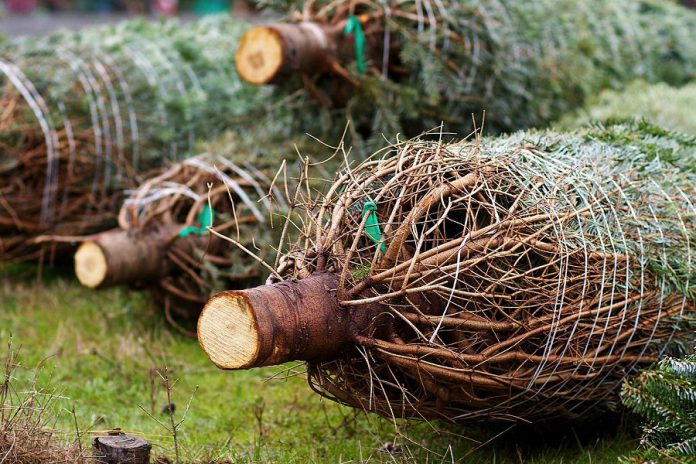
A Christmas tree strapped to the roof of car or minivan was a common sight over the weekend, as people everywhere brought home their tree for the Christmas season. With Christmas Eve just two weeks away, there is a definite since of holiday urgency in the air.
This time of year, the decades-old argument of real Christmas tree vs. artificial always rears its head. The answer, of course, is always real.
Artificial trees, popular for their ease of setting up and taking down and the fact they leave no needles behind, are popular — but also far from the most eco-friendly choice.
Most artificial trees start their journey thousands of kilometers away in China, where low-paid factory workers (by some estimates making no more than $100/month) assemble the trees en masse for the North American market. According to the U.S.-based Nature Conservancy in a 2010 blog post, at least 85% of artificial Christmas trees used in that country are imported from China.
Employee pay and working conditions aside, the amount of greenhouse gas emitted around the production of artificial trees is very high. The trees are generally made from a type of plastic called polyvinyl chloride (PVC) that is derived from petroleum and isn’t easily recycled. If the emissions associated with plastic production weren’t enough, more are produced to generate the electricity used to melt the plastic in the production process.
Once artificial trees are manufactured, they still have to be shipped across the ocean, usually by ship, which produces more emissions still. A 2009 study undertaken by a Quebec company, Ellipsos, remarks that “when compared on an annual basis, the artificial tree, which has a life span of six years, has three times more impact on climate change and resource depletion than the natural tree.” Food for thought.
Locally grown Christmas trees are always the best choice. They’re not only good for the environment, but also help sustain jobs and boost the local economy.
These trees are good for the environment because they are grown as a sustainable agricultural crop on Christmas tree farms. When trees are harvested for the holidays, new seedlings are planted for future holiday seasons.
Ontario Christmas trees support our ecosystems by providing wildlife habitat protection for small birds and animals and, unlike their artificial cousins, soak up carbon dioxide emitted by cars, planes, and homes and turn it into oxygen. According to Ontario Wood, every acre of planted Christmas trees provides the daily oxygen needed by 18 people.
A huge benefit to using a natural tree is that it’s 100% biodegradable and can be re-used after the holidays. In Peterborough and many other communities, trees are collected in early January and chipped into mulch for use in gardens and landscaping in the spring. For those who want to hang on to their tree, they can be reused as a bird feeder, garden ornament, or for a woodworking project. Birds love the extra shelter a tree can provide, providing refuge from predators.
Christmas trees are a big industry in our province. One million Christmas trees are harvested at more than 600 Christmas tree farms each year and sold across the province and beyond, generating approximately $12 million in farm gate sales and helping to support jobs and local economies.
Real trees — at least those harvested from a grower — aren’t perfect, however. They require the application of pesticides to control insects, which can be potentially harmful to the environment. However, according to an online article from the Mother Jones website, the volume of pesticides applied to trees is much lower than that of other agricultural crops.
If you plan to choose a natural tree this year, the Ontario Christmas Tree growers have an online tool which can help find the closest tree farm to you. Visit their website at christmastrees.on.ca to view it.
Alternatively, heading into the woods and finding your own tree is also a great idea, and likely the greenest solution of them all. Coming straight from nature, you can guarantee no pesticides were ever used, and the tree will be as fresh as possible. That being said, if you’re not cutting it off your own property, make sure you have landowner permission first.


























